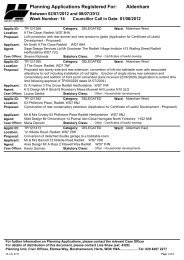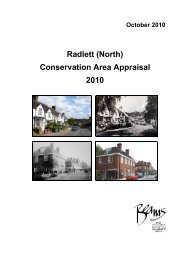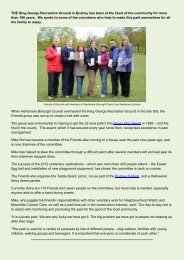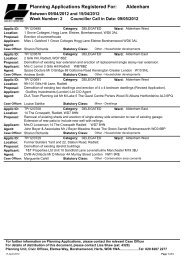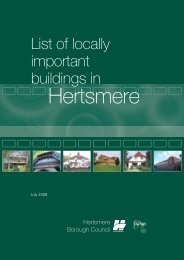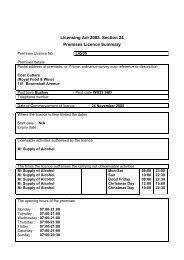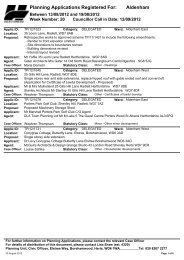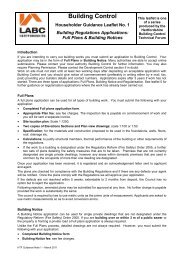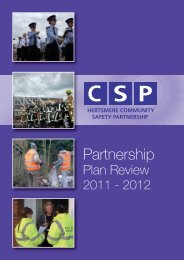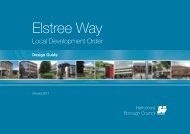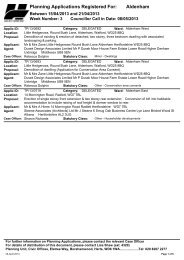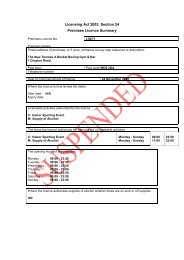Biodiversity - Hertsmere Borough Council
Biodiversity - Hertsmere Borough Council
Biodiversity - Hertsmere Borough Council
Create successful ePaper yourself
Turn your PDF publications into a flip-book with our unique Google optimized e-Paper software.
Supplementary Planning Document - Part B: <strong>Biodiversity</strong><br />
6. Protected species and species of interest in <strong>Hertsmere</strong><br />
Badgers<br />
Where are they in the <strong>Borough</strong><br />
6.1 Badgers are thinly scattered across the northern half of the borough but largely absent from the southern<br />
half, which is dominated by London Clay. There may be an association with the free draining chalkier soils,<br />
as there appears to be an aggregation of setts in the north-west of the borough where most chalk is at or<br />
close to the surface.<br />
Protection and Action Plans<br />
6.2 Badgers are a common animal in most of England, but there is specific legislation for their protection under<br />
the Protection of Badgers Act 1992. It is widely known that Badgers have been the victim of persecution<br />
and cruelty over many years. Natural England are responsible for issuing licences under section 10(1)(d) of<br />
the Protection of Badgers Act 1992 where it is necessary to interfere with a Badger sett in the course of<br />
development, which can include demolition, building, construction, mining and engineering operations and<br />
material changes of use.<br />
6.3 Badgers are not subject to a species action plan in the Hertfordshire BAP due to their status as stable in the<br />
local decline rating. Surveys and appraisals should help to reduce the risks of disturbing Badger setts or<br />
affecting their foraging territories. <strong>Hertsmere</strong> <strong>Borough</strong> <strong>Council</strong> will advise anyone submitting an application<br />
for development in an area where there are known to be Badger setts that they must comply with the<br />
provisions of the Act.<br />
What to look out for<br />
6.4 There are several signs that indicate the presence of Badgers:<br />
• Badger paths linking sett entrances and foraging areas;<br />
• Tufts of black and white hair caught on barbed wire;<br />
• Footprints;<br />
• Claw marks scratched on tree trunks or stones;<br />
• Spoil heaps of earth outside sett entrances;<br />
• Bedding dropped on paths or near sett entrances;<br />
• Badger latrines.<br />
6.5 Developers will need to apply for a licence in respect to any new development that will involve interfering<br />
with a Badger sett. With respect to planning permission, disturbing a Badger sett, or adversely affecting a<br />
Badgers chance of survival are considered to be a material consideration in planning decisions.<br />
Badgers.<br />
Source: Clare Gray, Herts and Middlesex Wildlife Trust.<br />
(www.wildlifetrust.org.uk)<br />
Further information:<br />
• English Nature’s ‘Badgers and Development’ available from www.naturalengland.org.uk<br />
• Natural England - ‘Badgers And Development A Guide to Best Practice and Licensing’ available from<br />
www.natural england.org.uk<br />
16<br />
6. Protected species and species of interest in <strong>Hertsmere</strong>



